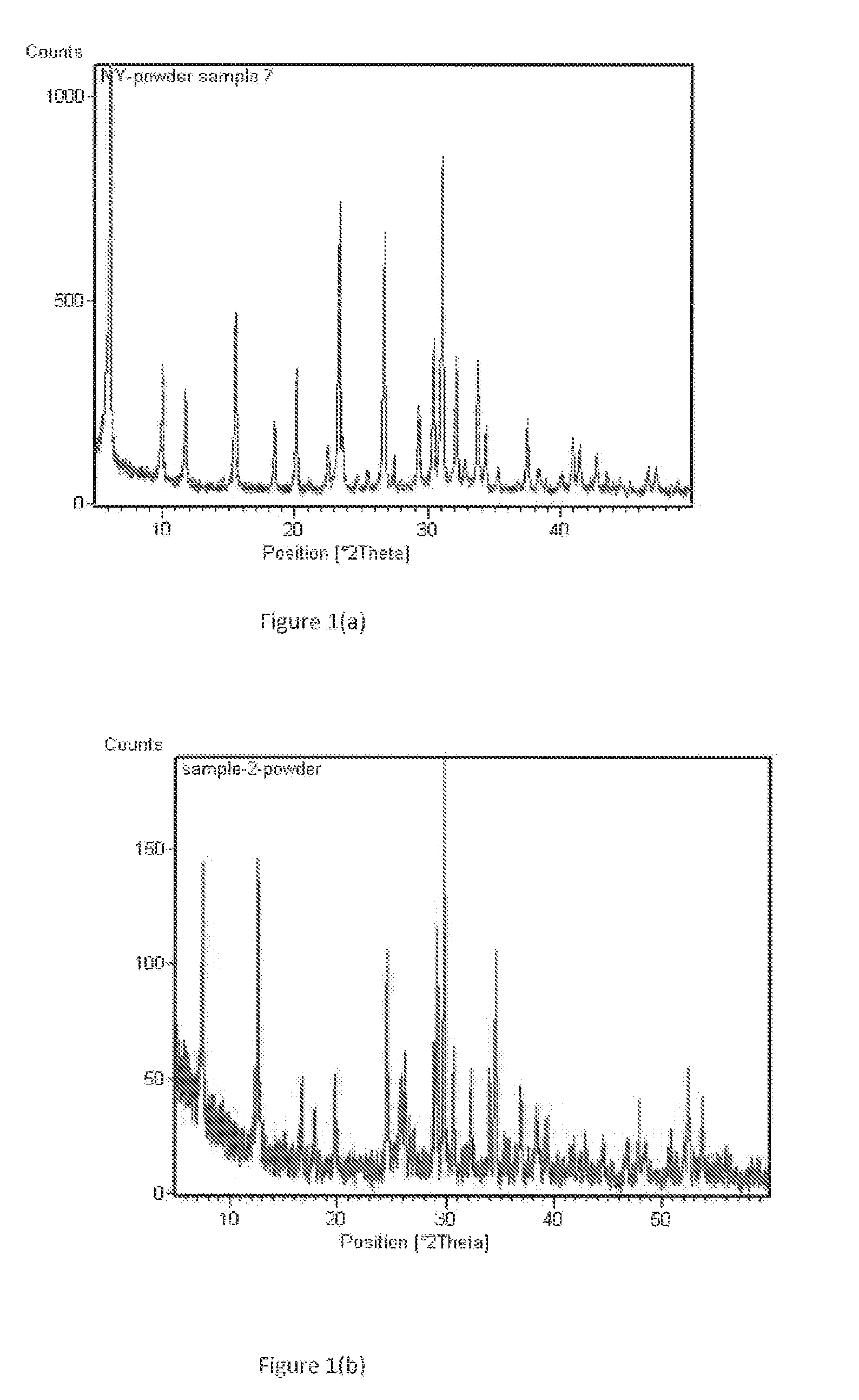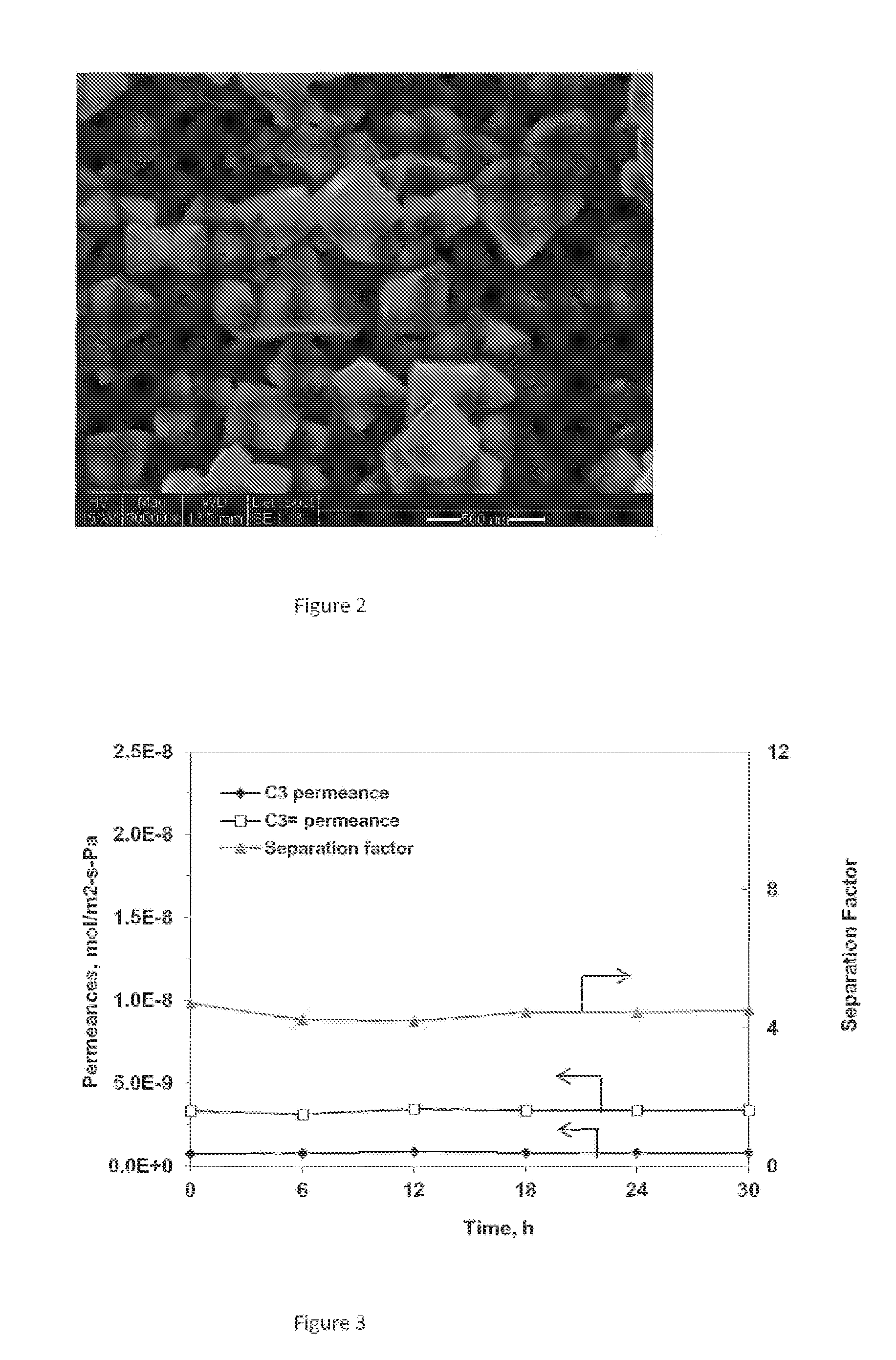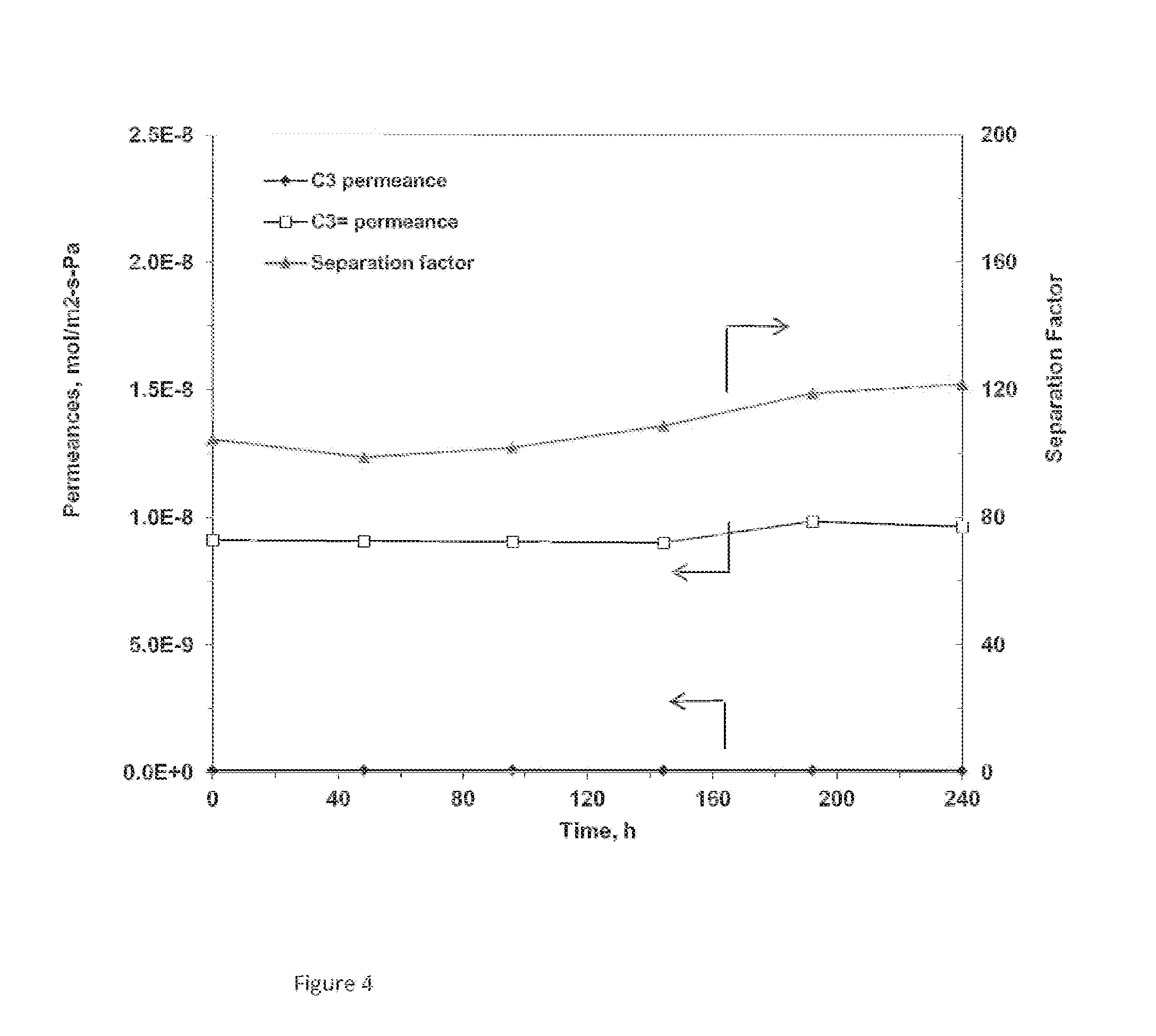Composite membranes for olefin/paraffin separation
a technology of olefin/paraffin separation and composite membrane, which is applied in the direction of membranes, dispersed particle separation, separation processes, etc., can solve the problems of phase change and consume a huge amount of energy, state-of-the-art membranes cannot meet the stringent requirements of real-life olefin/paraffin separation, and achieves excellent ion exchange ability, facilitate transport mechanism, and high selectivity. olefin
- Summary
- Abstract
- Description
- Claims
- Application Information
AI Technical Summary
Benefits of technology
Problems solved by technology
Method used
Image
Examples
example 1
Preparation of Zeolite Nanoparticle Suspension
[0068](a) Y-type zeolite nano-particles. The Y-type zeolite nanoparticle seeds were prepared by hydrothermal synthesis. Amounts of NaAlO2 (2.78 g)+NaOH (12.67 g)+distilled water (149.91 g) were mixed and then stirred for 30 minutes. Water glass (41.83 g) was added, and the mixture was stirred for 12 hours. The resulting mixture was transferred into a TEFLON® bottle for hydrothermal synthesis at 90° C. for 12 hours. After the hydrothermal synthesis, the resulting seed suspension was washed to a pH of 8˜9 for further use.
[0069](b) ETS-10 zeolite nanoparticles. Sodium silicate solution was mixed with 15.4 g distilled water, 2.47 g sodium hydroxide, 2.33 g sodium chloride, and 3.63 g potassium chloride. This mixture was thoroughly stirred until a solution was obtained. Titanium dioxide (1.7 g) was then added with stirring, and a homogeneous gel formed. Static crystallization was carried out in TEFLON-lined autoclaves at 220° C. for 24 hours....
example 2
Preparation of Membrane #Y-1, and Separation Performance.
[0071]This example is directed to the preparation of zeolite membrane #Y-1. The precursor solution for secondary growth was prepared in a TEFLON beaker by dissolving 1.235 g NaAlO2 and 6.965 g NaOH in 88.86 g de-ionized water, under rigorous stirring. After addition of 15.5 g water glass and stirring for another six hours at room temperature, the precursor was transferred into the TEFLON-lined synthesis vessels. The seeded alumina disc was placed vertically at the bottom of the vessel and completely immersed in the synthesis solution about 1 cm below the liquid surface. The container was then moved into an oven to perform hydrothermal synthesis at 100° C. for 12 hours. The membrane was taken out, washed with distilled water, and dried at 70° C. overnight. The membrane was then subjected to a second hydrothermal synthesis. This membrane was characterized by X-ray diffraction (XRD, Rigaku D / MAX-II), showing the pattern set forth...
example 3
Membrane #Y-2 Synthesis and Separation Performance.
[0073]Membrane #Y-2 preparation and ion-exchange process were the same as in Example 2, except that the membrane was subjected to calcination under a nitrogen environment. After calcination, the membrane was subjected to UV irradiation. This membrane showed a propylene selectivity of 1.31 over propane.
PUM
| Property | Measurement | Unit |
|---|---|---|
| Temperature | aaaaa | aaaaa |
| Time | aaaaa | aaaaa |
| Angle | aaaaa | aaaaa |
Abstract
Description
Claims
Application Information
 Login to View More
Login to View More - R&D
- Intellectual Property
- Life Sciences
- Materials
- Tech Scout
- Unparalleled Data Quality
- Higher Quality Content
- 60% Fewer Hallucinations
Browse by: Latest US Patents, China's latest patents, Technical Efficacy Thesaurus, Application Domain, Technology Topic, Popular Technical Reports.
© 2025 PatSnap. All rights reserved.Legal|Privacy policy|Modern Slavery Act Transparency Statement|Sitemap|About US| Contact US: help@patsnap.com



